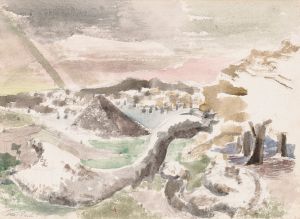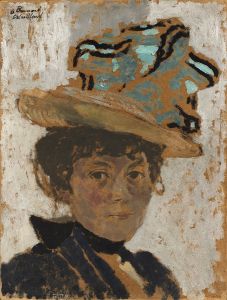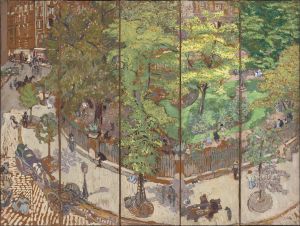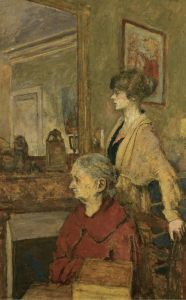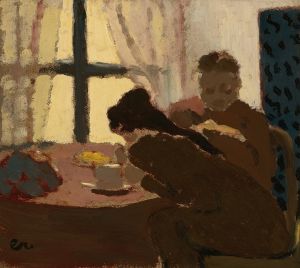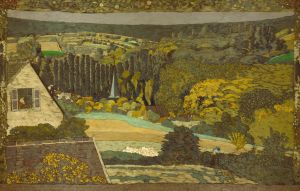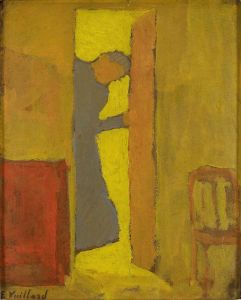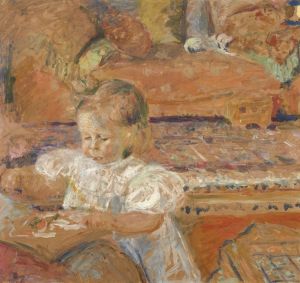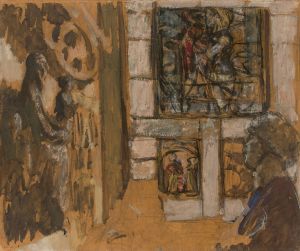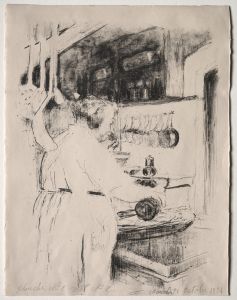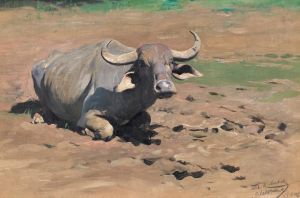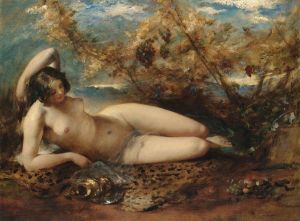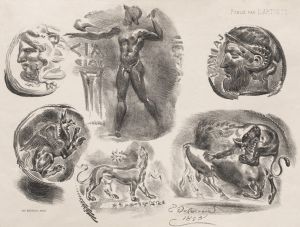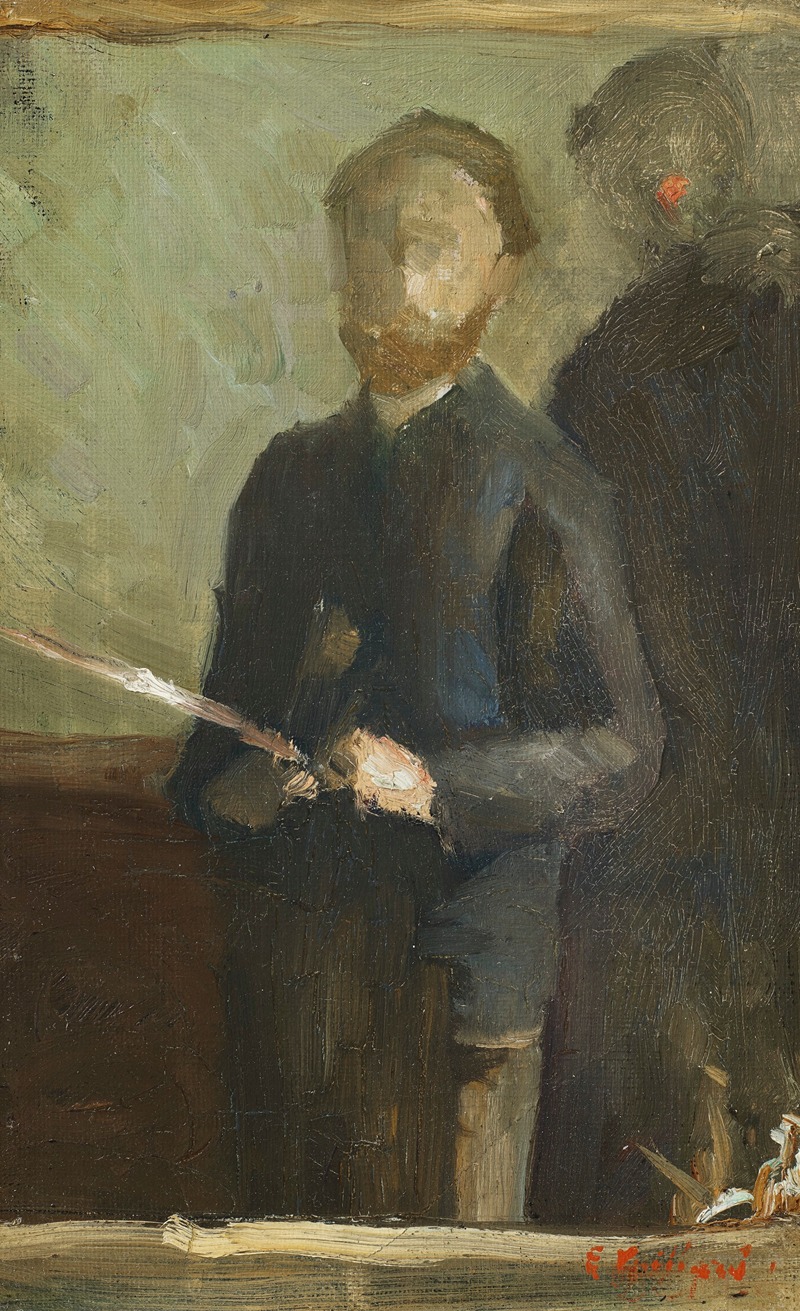
Étude pour ‘Autoportrait avec Waroquy’
A hand-painted replica of Édouard Vuillard’s masterpiece Étude pour ‘Autoportrait avec Waroquy’, meticulously crafted by professional artists to capture the true essence of the original. Each piece is created with museum-quality canvas and rare mineral pigments, carefully painted by experienced artists with delicate brushstrokes and rich, layered colors to perfectly recreate the texture of the original artwork. Unlike machine-printed reproductions, this hand-painted version brings the painting to life, infused with the artist’s emotions and skill in every stroke. Whether for personal collection or home decoration, it instantly elevates the artistic atmosphere of any space.
Édouard Vuillard, a prominent French painter associated with the Nabi movement, created the artwork "Étude pour ‘Autoportrait avec Waroquy’" during his prolific career in the late 19th and early 20th centuries. Vuillard is renowned for his intimate domestic interiors and his ability to capture the subtleties of everyday life, often featuring family members and close friends in his compositions.
"Étude pour ‘Autoportrait avec Waroquy’" is a study for a larger work, showcasing Vuillard's meticulous approach to composition and character portrayal. This particular study reflects Vuillard's interest in exploring self-representation and his relationships with those around him. The title suggests that the work includes a self-portrait of Vuillard alongside a figure named Waroquy, though specific details about Waroquy are not widely documented in art historical records.
Vuillard's technique often involved the use of rich, muted colors and a focus on pattern and texture, which can be seen in this study. His style is characterized by a blend of Impressionist influences and a more decorative approach, typical of the Nabis, who sought to synthesize fine art and decorative art. Vuillard's works frequently exhibit a flatness and emphasis on surface design, drawing inspiration from Japanese prints and the Symbolist movement.
The study likely served as a preparatory work, allowing Vuillard to experiment with composition, color, and form before executing the final piece. Such studies were common in Vuillard's practice, providing insight into his creative process and the evolution of his ideas. While the final version of "Autoportrait avec Waroquy" may not be as well-known or as frequently exhibited as some of Vuillard's other works, the study remains an important piece for understanding his artistic development and personal connections.
Vuillard's oeuvre is celebrated for its introspective quality and the way it captures the quiet moments of bourgeois life in France during the Belle Époque. His works are housed in major museums around the world, including the Musée d'Orsay in Paris and the Metropolitan Museum of Art in New York, where they continue to be studied and appreciated for their unique contribution to modern art.
"Étude pour ‘Autoportrait avec Waroquy’" exemplifies Vuillard's ability to blend personal narrative with broader artistic trends of his time. It reflects his dedication to exploring the nuances of human relationships and the environments they inhabit. As with many of Vuillard's works, this study invites viewers to look beyond the surface and consider the deeper emotional and psychological layers present in his art.





